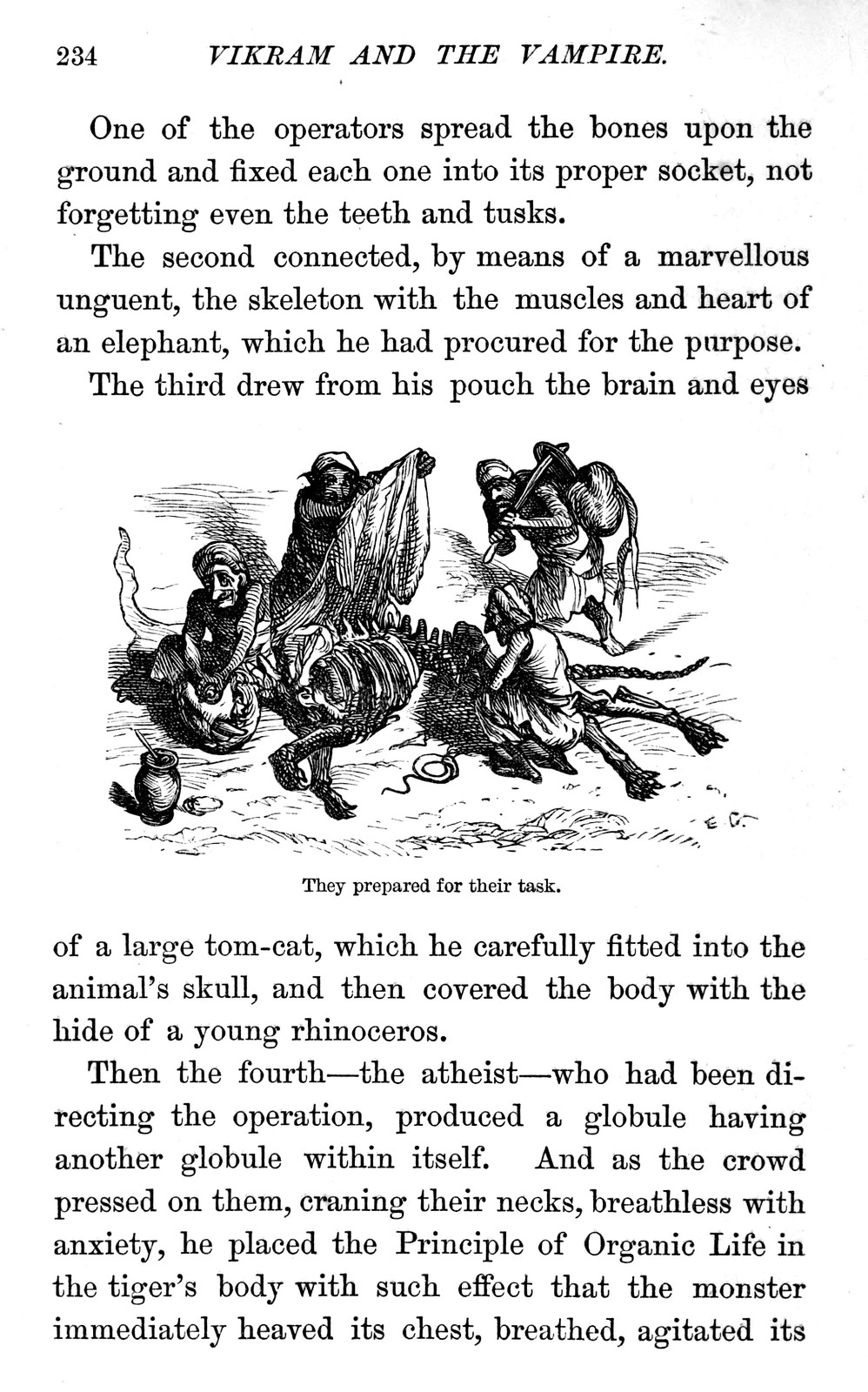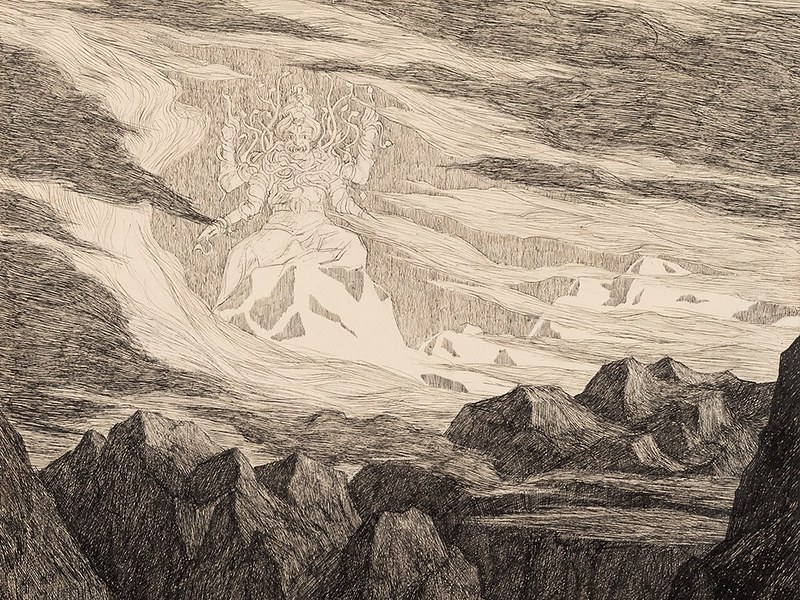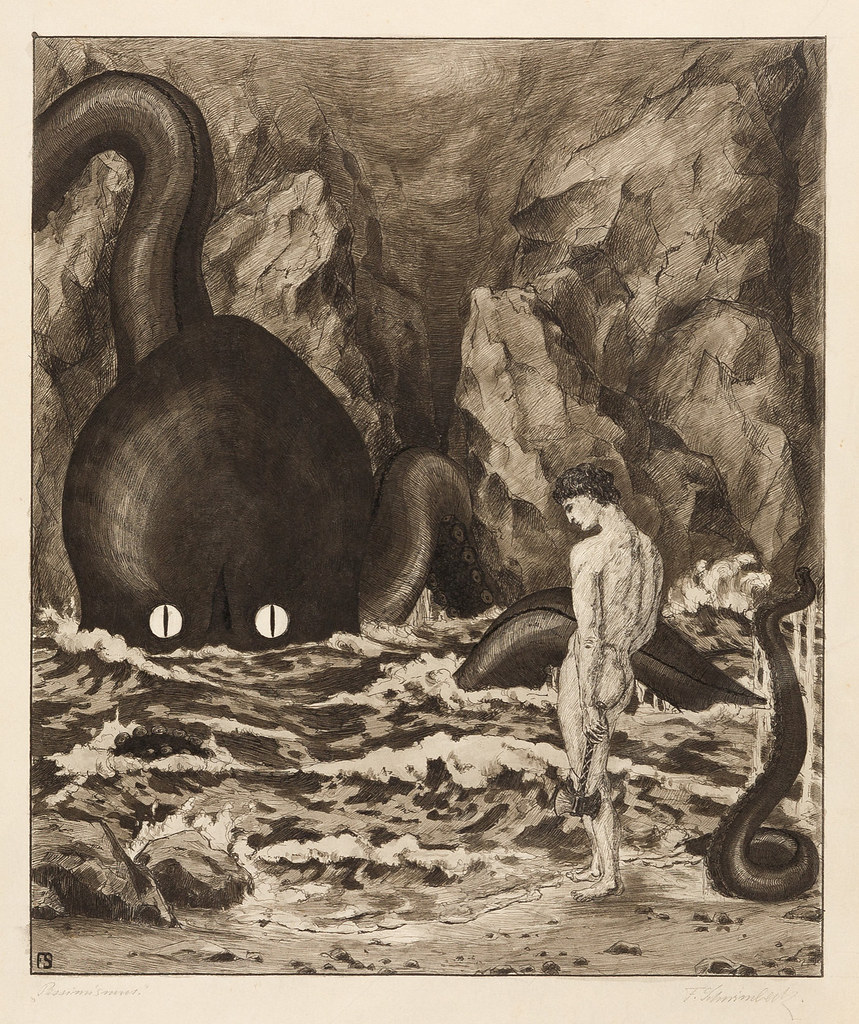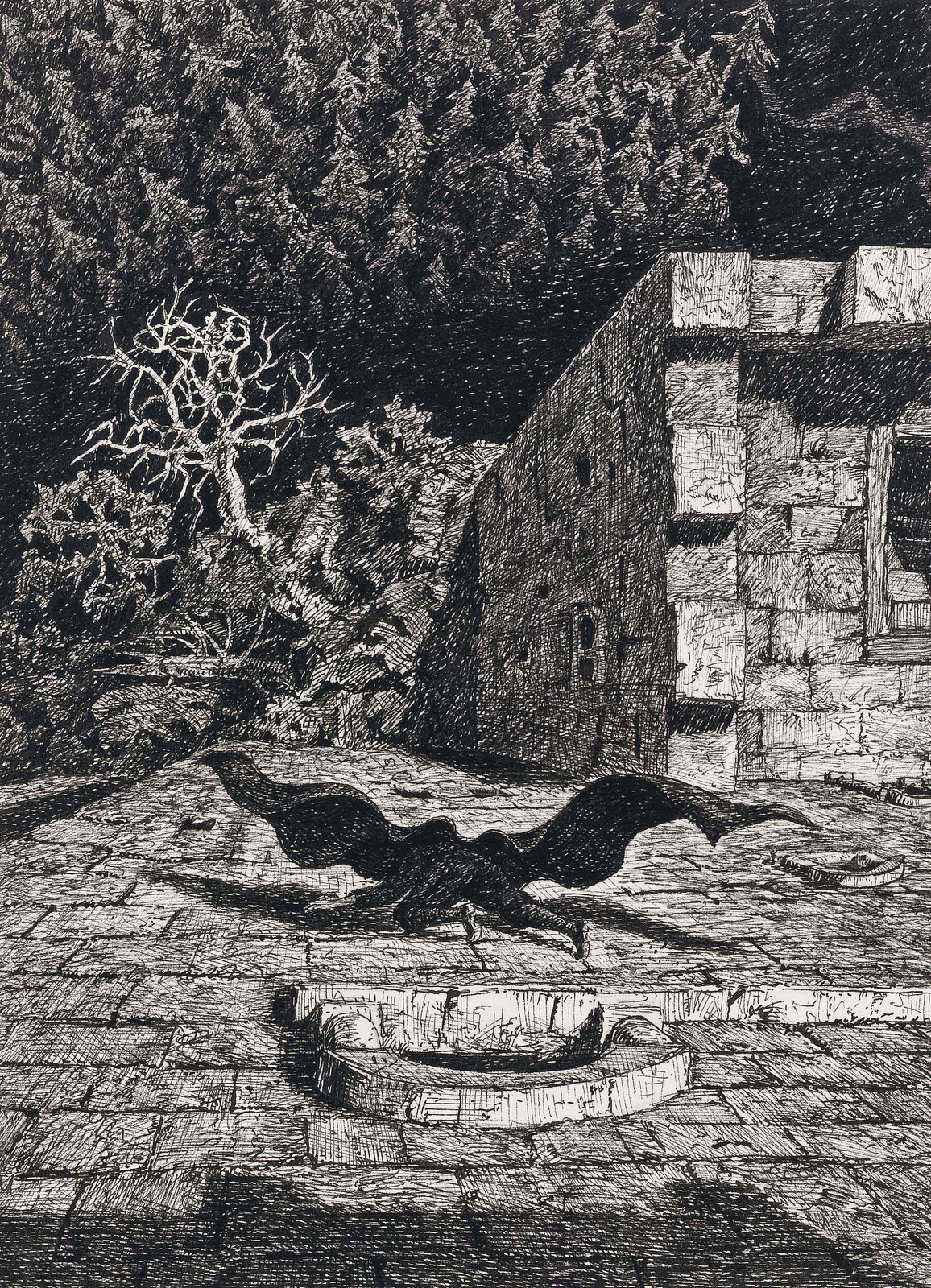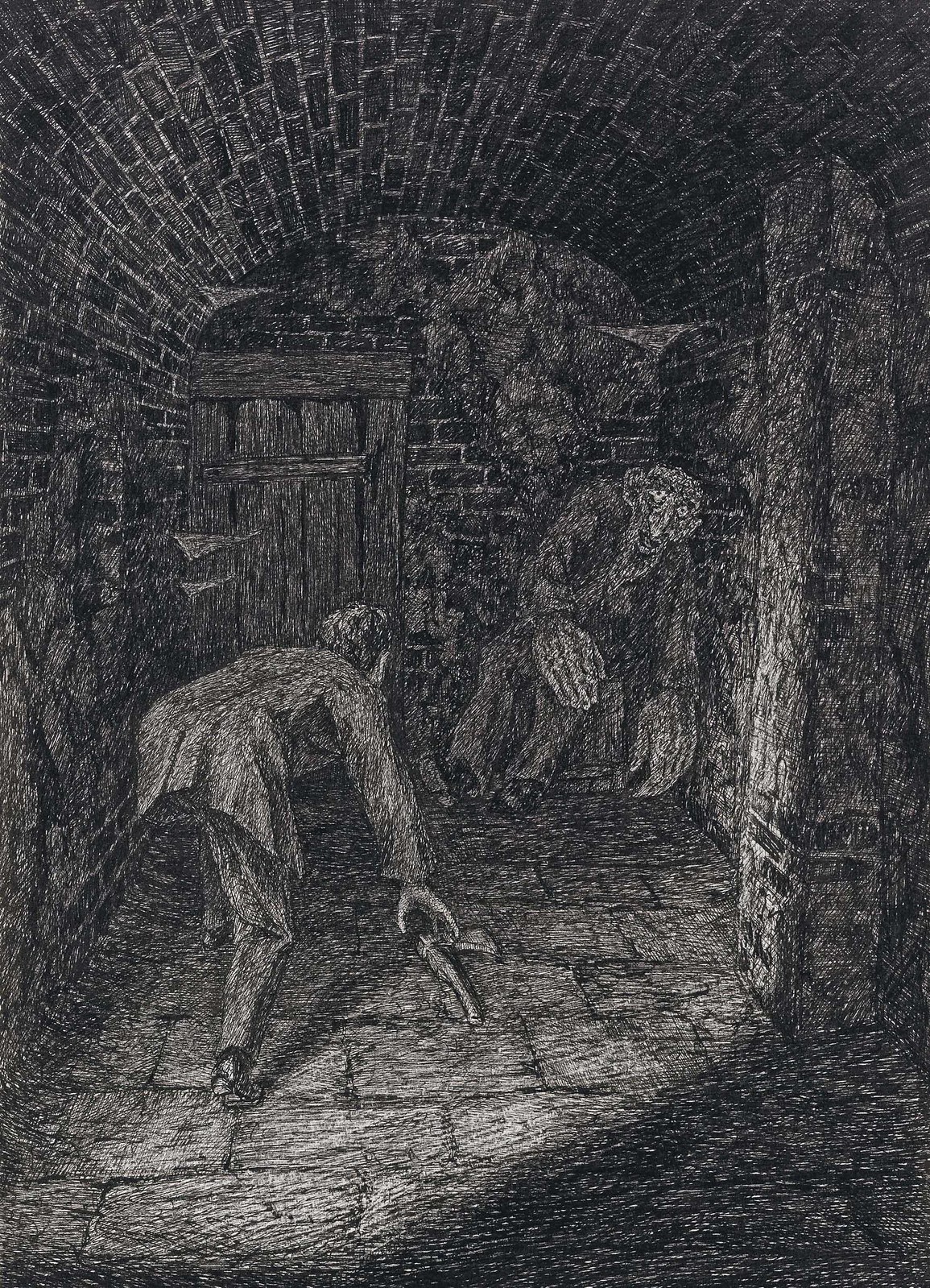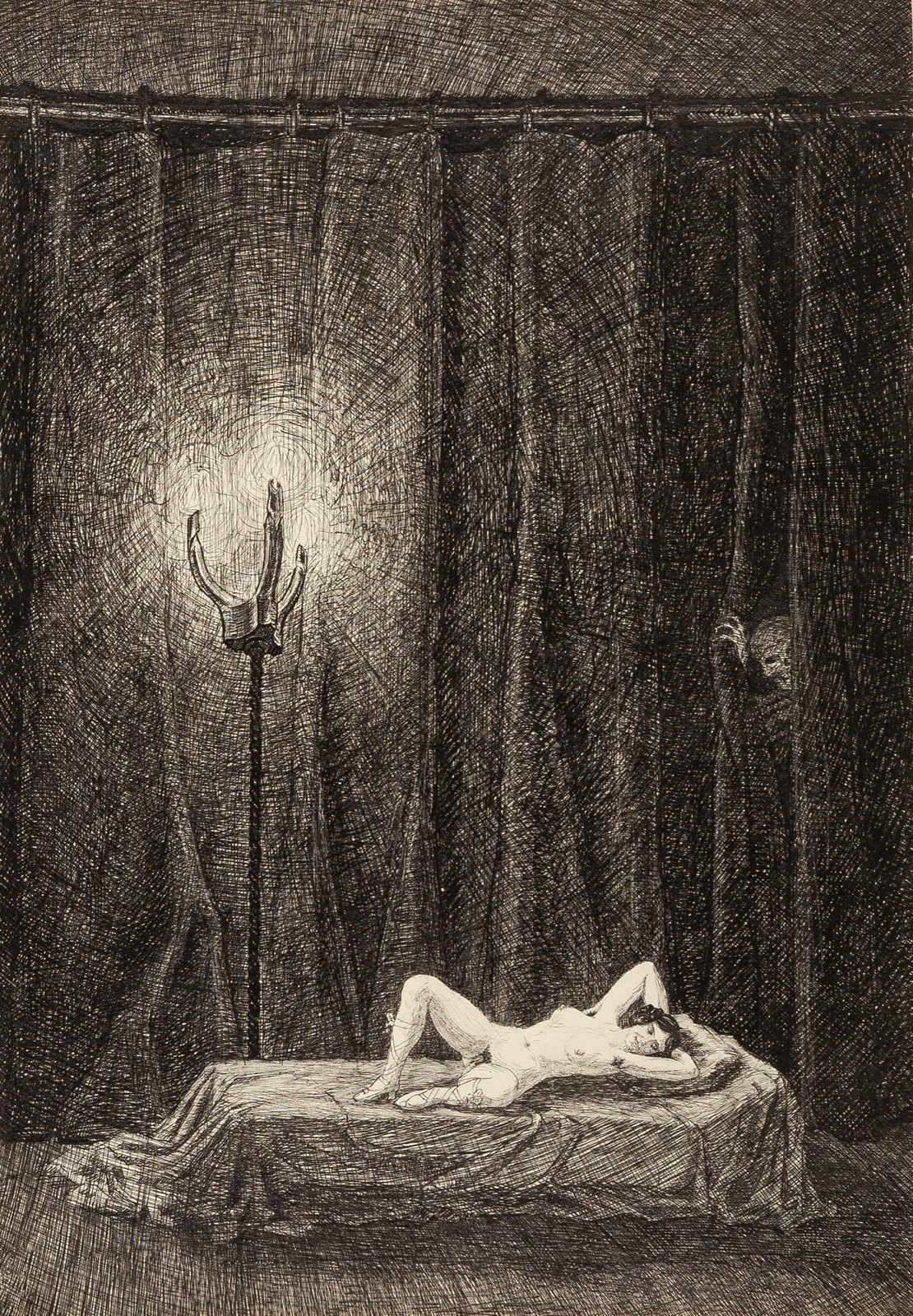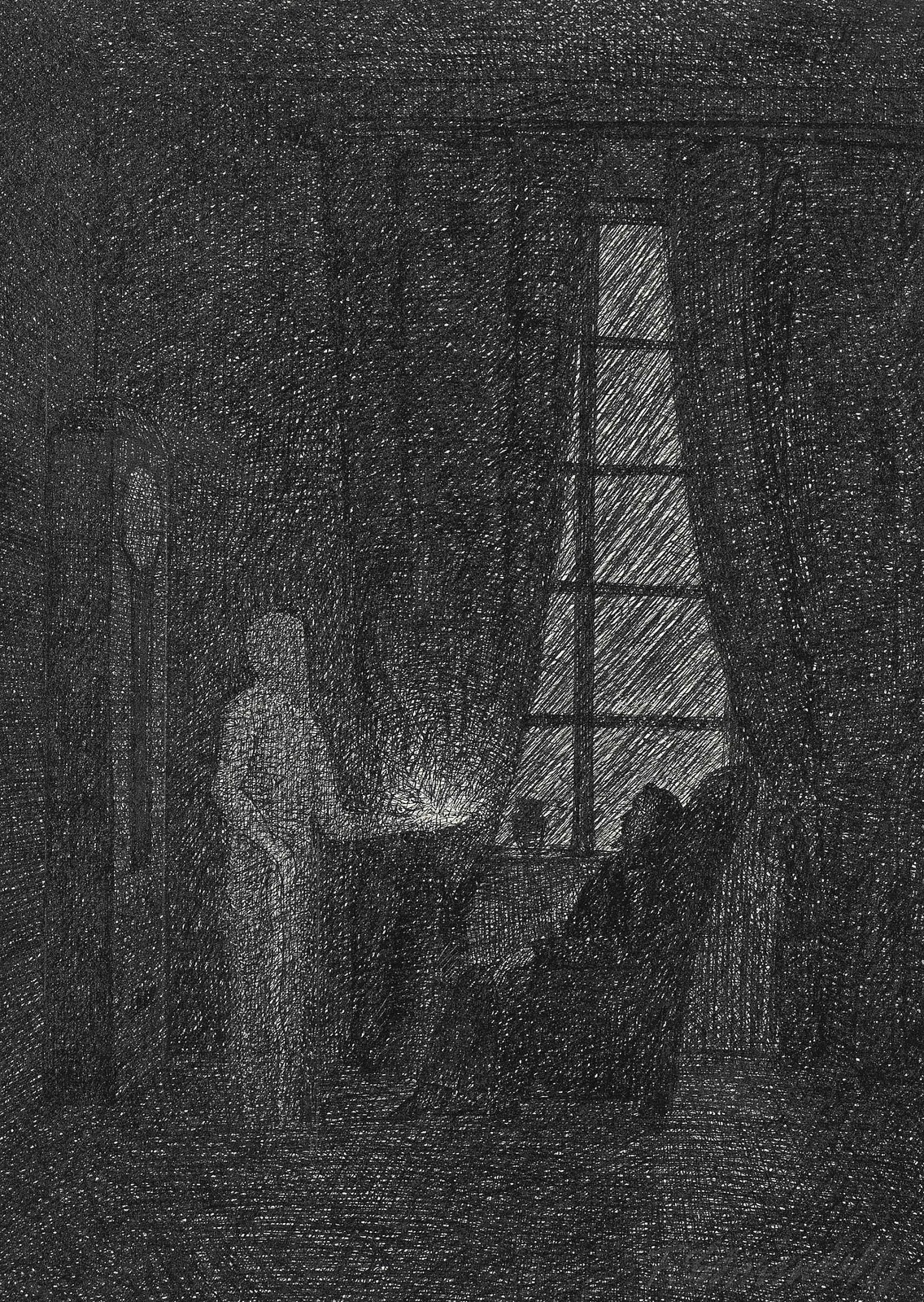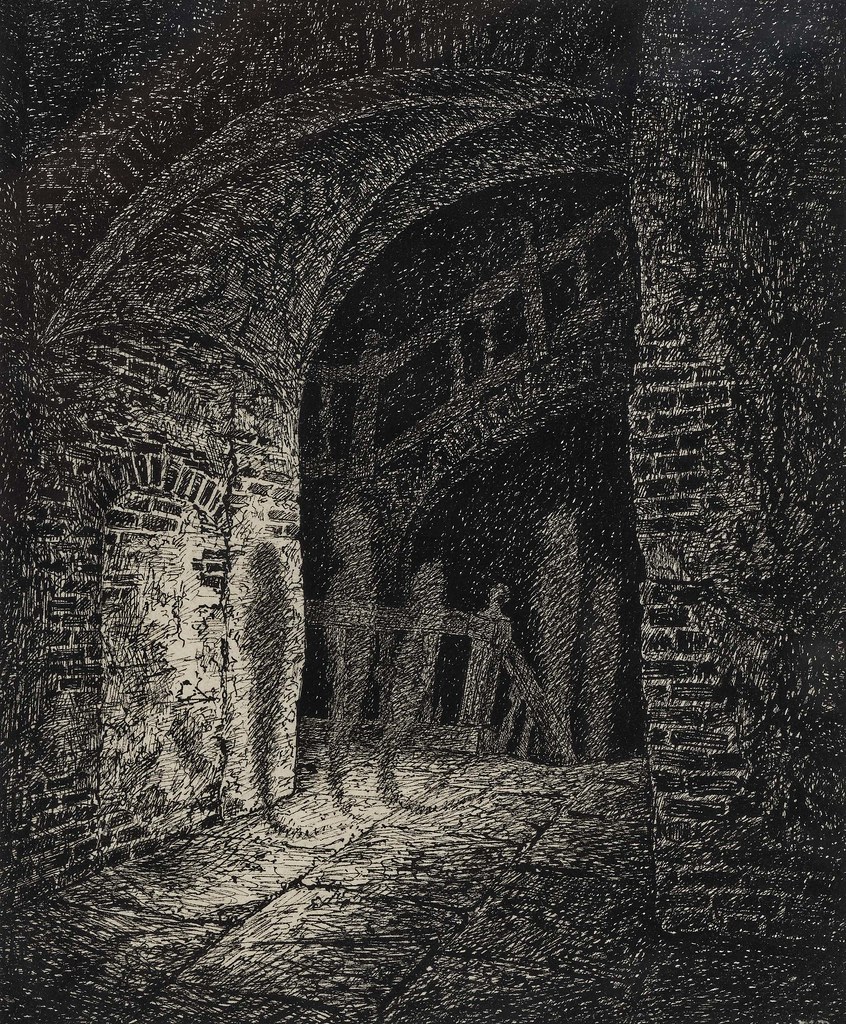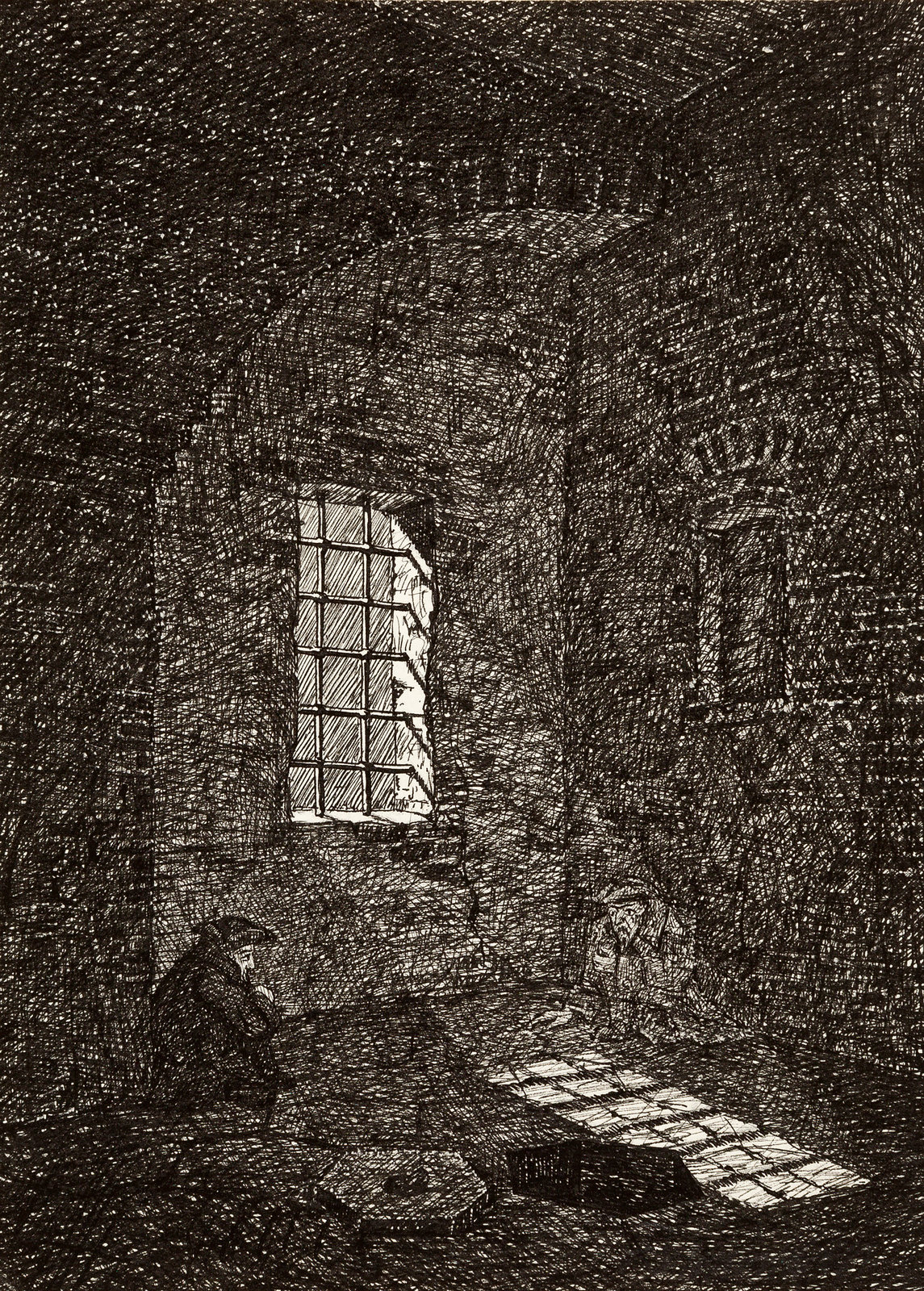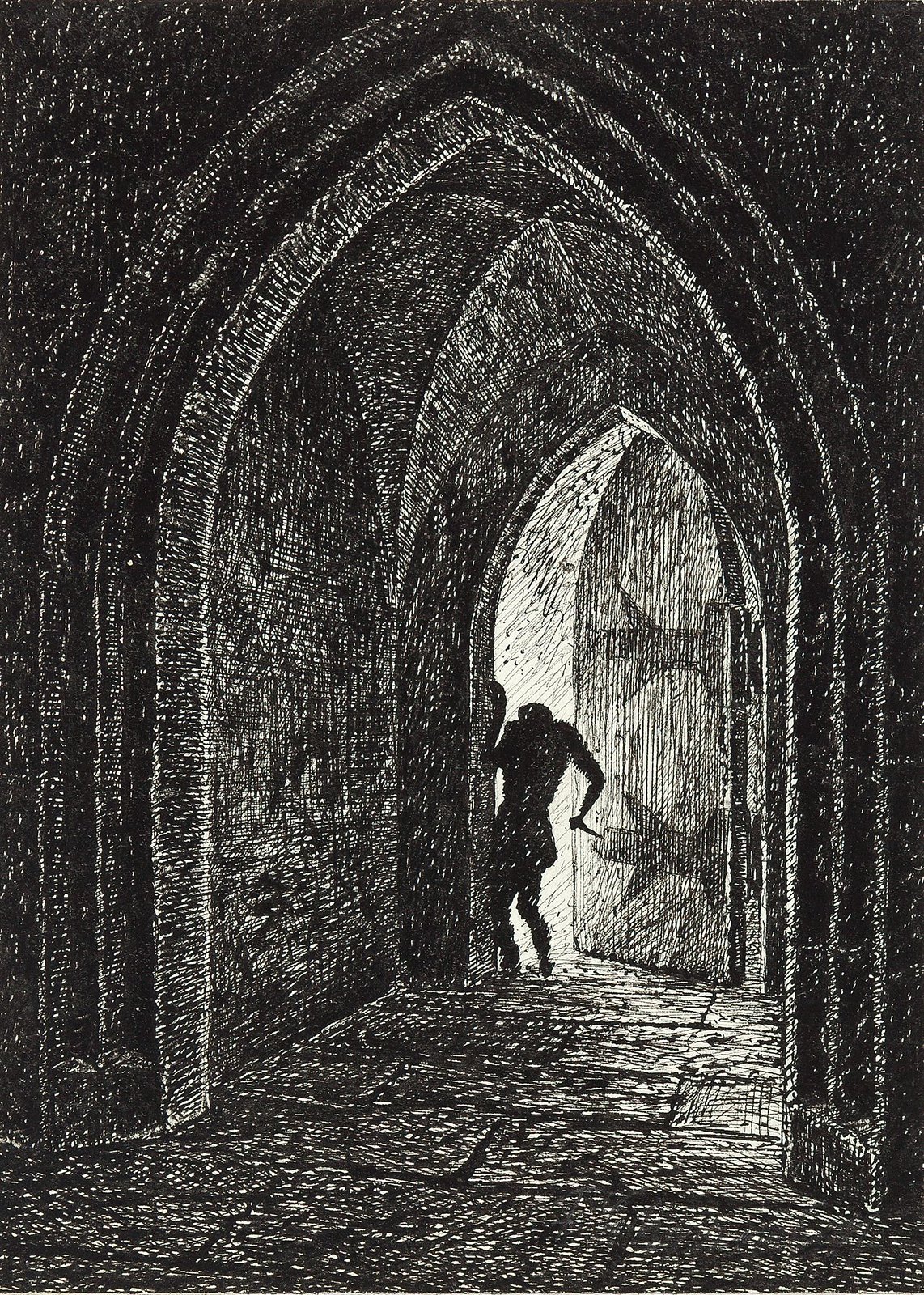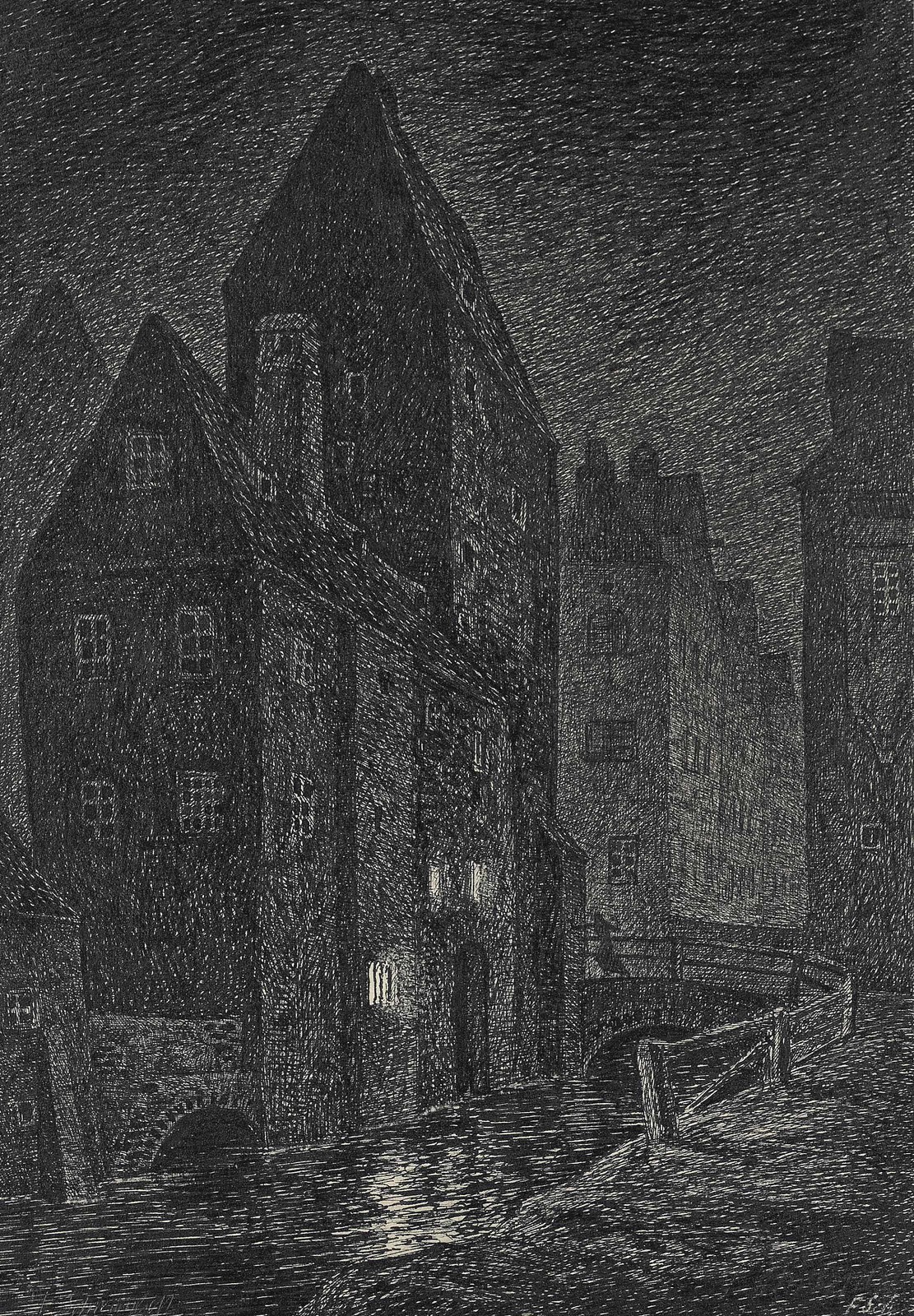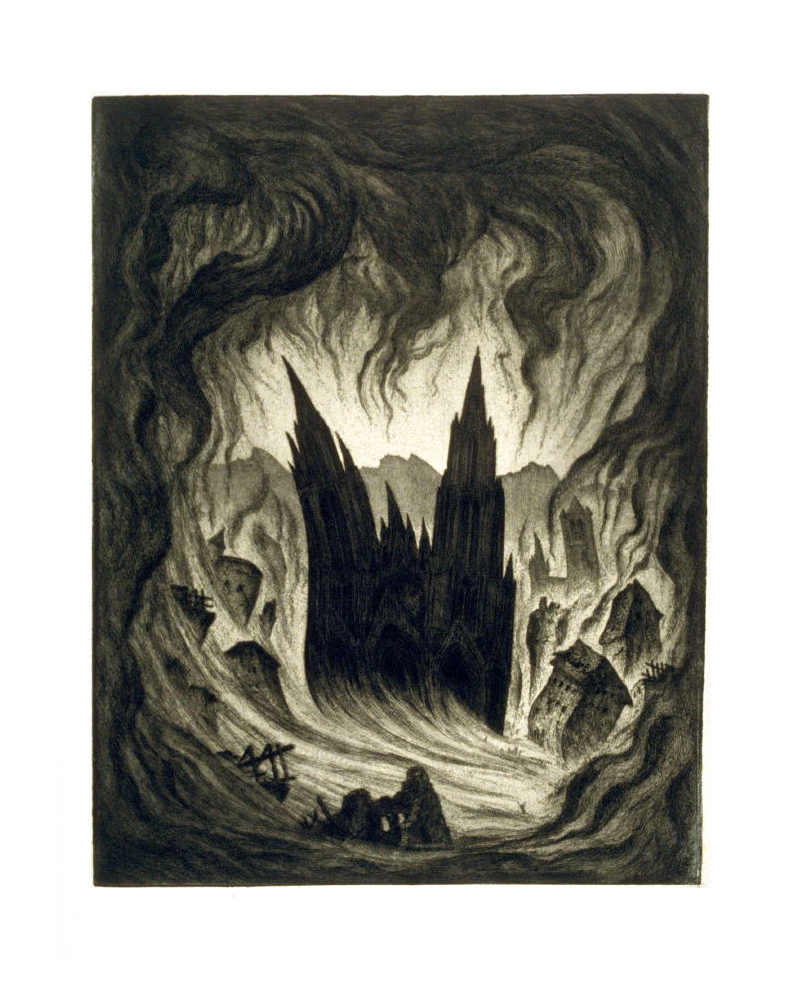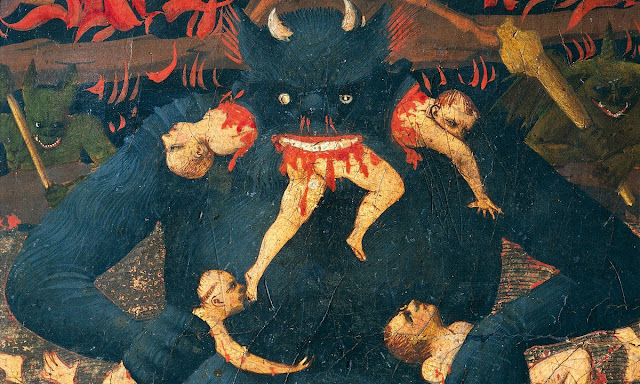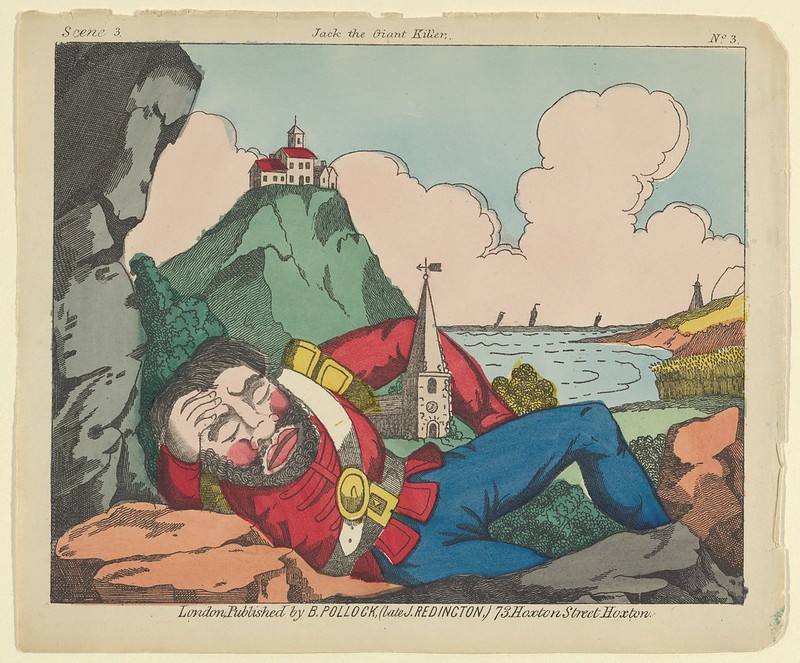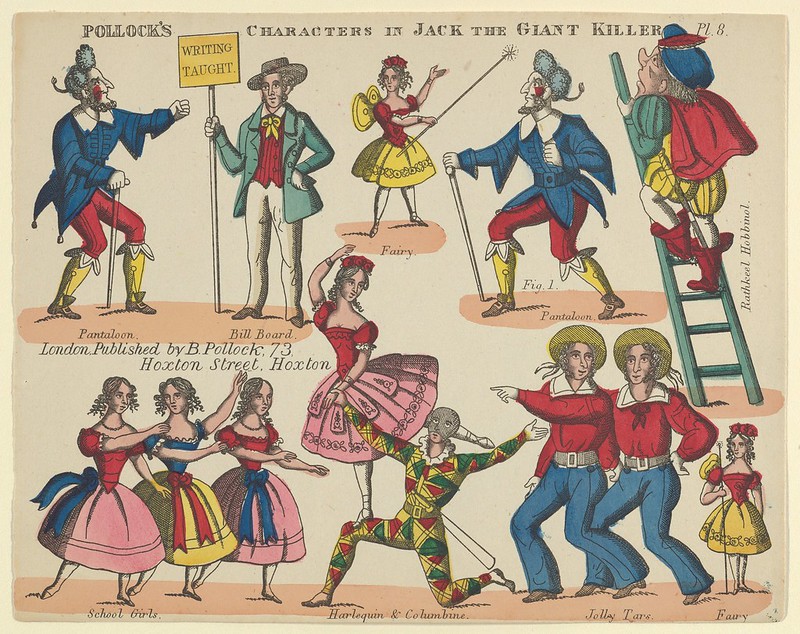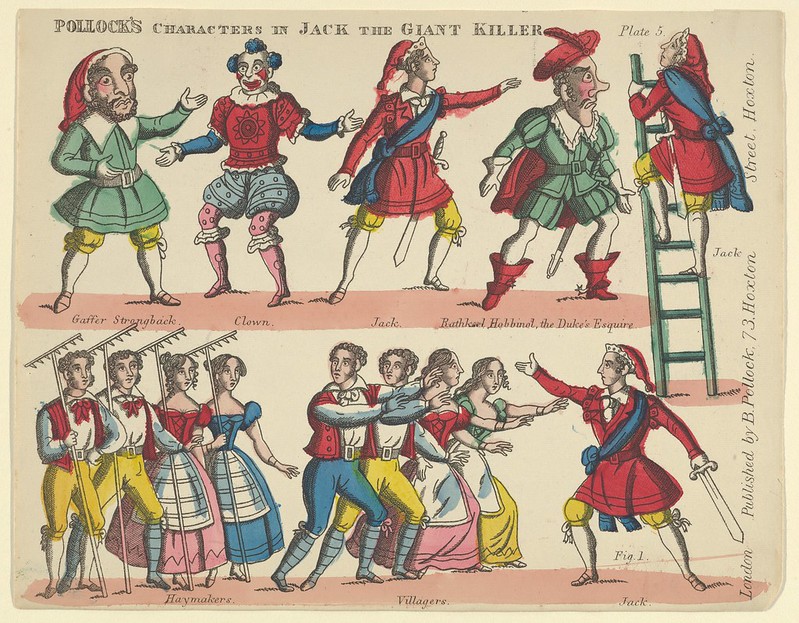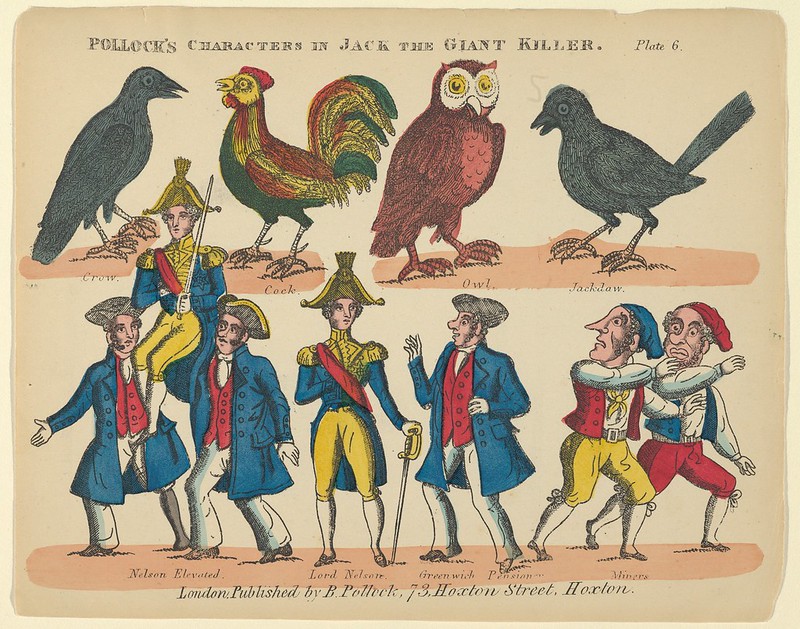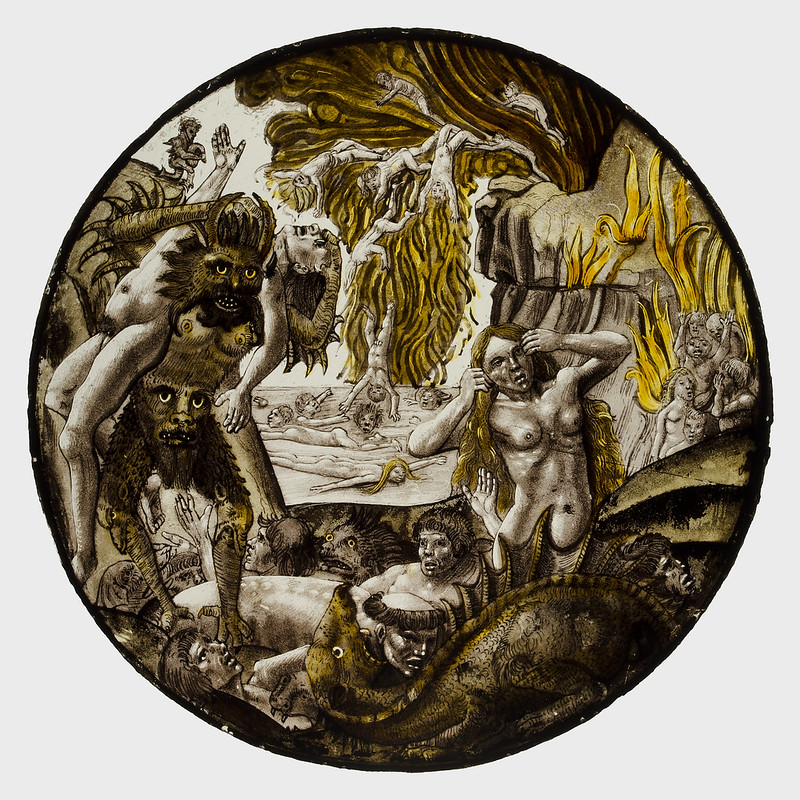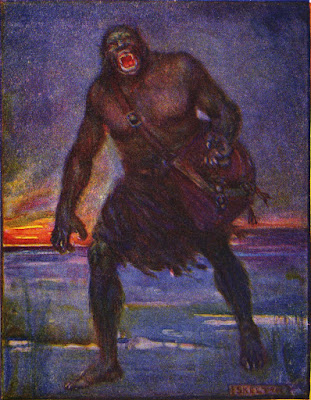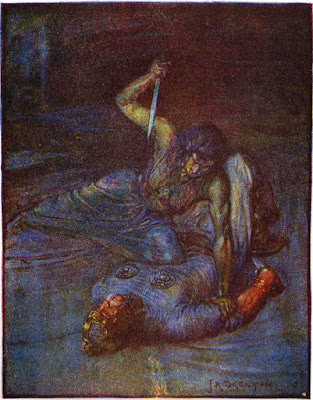
Imagine a roleplaying game which gives you two hundred pages of character options. Imagine a roleplaying game with a large expansive setting. Imagine a roleplaying game which builds the details of its setting from its character options—all two hundred pages of them. Imagine that Player Character generation in such a roleplaying game—with all two hundred pages of its options would take a mere five minutes. Actually less. Imagine a roleplaying game in which the Player Characters are adventurers and treasure hunters across this large expansive setting. Imagine that such a roleplaying game has Old School Renaissance sensibilities in terms of its simple mechanics—simple mechanics which are explained in four pages—and the dauntingly dangerous nature of its world. Combine all of these aspects together and what you have is
Electric Bastionland, a roleplaying game of failed careers, debt and treasure hunting, and exploration and survival, across, under, and beyond a vast metropolis which is created and improvised through play and from tables.
Electric Bastionland: Deeper into the Odd is published by
Bastionland Press, following a successful
Kickstarter campaign. As its title suggests, it is an expansion to the author’s earlier
Into the Odd and
Bastion Ein Sof, but a standalone expansion, one that takes the seemingly formerly wretched city of Bastion into the Electric Age and sees it glow with the fierce yellow of Electricity and grow and encroach upon other cities, to become a modern metropolis of bright lights and possibilities. It is a city that juxtaposes the familiar and the odd, the latter making those that engage with the oddness also odd. It is a city without a council, but many councils and many boroughs. It is a city which is constantly being built, but nobody claims to have built. It is a city of modernity with the sensibility of the past. It is a city of electricity and the consequences of that electricity—strange transmissions on the Radio, unnerving headaches near power stations, and machines that serve themselves. It is a city without a history and a city whose history has become a physical thing. Bastion is the present. Deep Country, beyond the limits of the city where everything was better, but simplistic and inconvenient, is the past. The Living Stars are the future. Connecting the three—Bastion, Deep Country, the Living Stars—is The Underground. It connects everything, tests everyone, and lies beneath reality, but it will get you where you want to go—eventually. Bastion as a city and a setting has the feel of
La Belle Époque and of
La Ville Lumière, and then hints of the Jazz Age verging on an ecumenopolis, but stranger, weirder, and odder the closer you look. Just how strange, just how weird, and just how odd, begins with the Player Characters.
Each Player Character begins play in debt, their career a failure, desperate to pay off this debt such that they embark on ‘great’ treasure hunts. Working with a fellow band of Debtors, they know that if they can find it, the treasure will surely be enough to pay off their debts. Yet they have a rival, and he also knows of the treasure. Tarry long in their expedition and the rival may retrieve the treasure and so their debt remains, grows even. In working to retrieve the treasure the Debtors will encounter the oddities and the weirdness of Bastion. Both will rub off on the Debtors, leaving also weird and odd, and that is in addition to the scars and bruises they may gain along the way. If they survive, they may also become Grizzled as well as scarred.
A Player Character in
Electric Bastionland has three abilities—Strength, Dexterity, and Charisma. These are rated between three and eighteen. He has a six-sided die’s worth of Hit Protection and a six-sided die’s worth of New Pounds—this is not a lot of money. Together with his fellow Debtors, he owes £10,000. The exact nature of the debt is determined by the Failed Career of the youngest player. For example, a Fashionista owes The Lion Council—a literal council of lions—£10,000 and its members want the debt to be repaid in interesting meat, whilst a Petty Officer simply owes The Petty Court that amount, but can pay off half that amount by personally attending The Petty Court and representing himself in a tediously long trial of trivial affairs. Every Debtor has a Failed Career. Exactly what is determined by cross matching the Debtor’s lowest Ability score with his highest, and that gives a page number.
Every Failed Career is given a two-page spread and with one hundred Failed Careers in
Electric Bastionland, that is the aforementioned two hundred pages of character options and a third of the book already taken up! However, each Failed Career is described in relatively broad detail. Along with an illustration, each Failed Career is accompanied by a simple explanation, some sample names, and the reason for the Debtors’ debt. Besides one or two items of equipment, each Failed Career gives options which add further detail and flavour. Exactly is determined by many New Pounds a Debtor has and how many points of Hit Protection he has. For example, the Necro-Engineer specialises in the most modern means of dealing with the growing industry of corpse production. His name might be Do, Jincey, Gognon, or Zephryne; he owes money to The Jolity Engine, a sentient, building-sized gambling machine; and he owns sombre formal wear and a shovel. A pair of tables ask two questions—‘how did you get your start in the corpse disposal industry?’ and ‘what was your great project? (you couldn’t get funding)’. If Necro-Engineer begins play with £6, then the answer to the first question is, by ‘Chasing Scavengers Away’ and he is accompanied by a barely-domesticated hyena which sticks with him. If he begins play with £2, he was a ‘Professional Grave Visitor’ and has a lifetime’s supply of bouquets from various florists around the city. As to his greatest project, if the Necro-Engineer only has the one point of Hit Protection, it was The Incineration Dome and he has a fire-proof protective suit which fits over his formal wear, whereas if he has four points of Hit Protection, it was The Protein Reclamation Initiative and he has a jar of flavour-masking rub, which makes anything palatable! Each of these tables is different for each Failed Career, but each balances the amount of Hit Protection and New Pounds with a piece of equipment or a power or other benefit. The lower the amount of Hit Protection and New Pounds, the potentially more powerful the piece of equipment or power or other benefit—and vice versa.
Name: Slipper
Failed Career: Academic Debater
Strength: 13
Dexterity: 13
Charisma: 11
Hit Protection: 5
£5
Debt: Conglomerated Taxes (You are exempt from certain taxes, gaining an effective 50% discount on pets, hair products, and offal.)
Possessions: Cane (d6), pocket-watch
What Can You Debate Forever?: Formal Wear (Headgear)
What Did Your University Provide As A Leaving Gift?: A Novelty Umbrella (also a clarinet).
Go through the list of Failed Careers and what
Electric Bastionland is doing is not just providing the means to create characters, but detailing aspects of the world. Thus, Gutter Minder Failed Career might establish that the Debtor is Rat given human form in a lab experiment or a former High Society member, the only survivor of a mob uprising. The first establishes that somewhere in Bastion, someone is experimenting on animals, and that perhaps there might be a laboratory where they might be working on more, that there might be other, similar creatures out there, and so on. The second that of an uprising which could be any number of reasons. From the Trench Conscript which suggests a war and a battle and a Criminal Bureaucrat who specialises the legal loopholes which make every crime legal to the Wall-Born which suggests Bastion is surrounded by walls to the Integrated Alien passing as human which suggests a Science Fiction aspect to the city and the Un-Revolutionary, who seeks to prevent, even undo change in a city that is changing, the Failed Careers each hint at and add aspects to Bastion. Of course, not all of them will come into play necessarily, though those pertaining to the Debtors currently being played, certainly should.
Mechanically,
Electric Bastionland shares much in common with the earlier Into the Odd. If a Debtor wants to undertake an action, his player rolls a twenty-sided die against the appropriate Ability, aiming to equal to or under to pass. For initiative in combat is handled with a Dexterity save. Combat is equally as simple. A player rolls the die for the weapon used to determine how much might damage be inflicted—there is no ‘to hit roll’. The target’s armour is subtracted from this and the remainder is subtracted from first his Hit Protection and then his Strength. Once damage is inflicted upon his Strength, a Debtor must make a save against his Strength in order to avoid being debilitated—which of course gets harder and harder the more Strength lost. Lastly, should a Debtor be reduced to exactly zero Hit Protection without suffering damage to his Strength, then he also scarred, which can be anything from an actual scar to doomed to die! And that is it in terms of mechanics, which are fully explained in just four pages! They are mostly player-facing, meaning that the players will probably roll more than the Conductor—as the Game Master is known in
Electric Bastionland, and combat is in general, short and nasty, and best avoided if possible.
The last third of
Electric Bastionland is for the Conductor. Advice, even direction for the Conductor, is to the point and laid out in short, easily grasped bullet points in ‘Preparing The Game’. The point of the roleplaying game is to find the treasure which will lift the Debtor out of penury, and so the treasure should be valuable rather than useful, there should be an explanation as to why it has not been found yet, and it should be thought-provoking. In a series of three bullet point blocks, the Conductor is guided through a range of subjects covering preparing and conducting the game, essentially presented as the principles behind the game. In turn, Bastion, Deep Country, and the Underground are presented in the same fashion, looking at how to understand, map, stock, and conduct (or referee) each of these weird and wonderful locations, often accompanied by tables that the Conductor can use as inspiration.
The advice for creating the inhabitants of Bastion is to make them interesting and memorable. Although they make up the majority, Humans are not the inhabitants of the city and beyond. Others include Mockeries, creatures of felt, wood, and string given life, hated by animals, but loved by children. Each has a particular talent and acts as if on the stage. In Bastion, they tend to be based on animals, Mock People though are loathed and Mock Objects stick to the Underground. Machines, connected to the Underground or a part of it, initiate change and monitor it, creating and modifying rather than destroying—and that can include the Debtors when encountered on their treasure hunt. Aliens are more advanced than the inhabitants of Bastion, but typically just a very specific way, and cannot truly integrate into society. Out in Deep Country, some have become gods or monsters of myth and legend. Monstrosities are each unique, each made rather than born, each mundane before it became what it is now.
The last part of
Electric Bastionland is ‘The Oddendum’, a collection of short articles which the Conductor can include in her game. The first of these though, ‘A Player’s Handbook: Strategy Guide’, is not for the Conductor, but the players. It is a two-page spread on how to play
Electric Bastionland and explore its city and beyond, and it is very useful. However, situated so very near the end of the book, it feels very much out of place, when really it should have been placed earlier, after the rules explanations and examples, where prospective players could have more readily found it. The rest of ‘The Oddendum’ covers a wide range of subjects, from Oddities, the strange devices and things whose workings defy explanation, but which might be magic or Sci-Fi and which everyone will want to buy or steal to an explanation of why the designer named the Game Master the ‘Conductor’ and how the city of Bastion is not a refuge or sanctuary to come back to from the Deep Country or Underground, but a continuation of the adventure. It includes sections of advice for the Conductor alongside sections of things to put in the game, so ‘The Balancing Act’ examines the balance between mechanics and making things interesting is followed by a list of Noble Weapons. This is followed by ‘Example Content’ such as ‘Unions and Rituals’—cults, clubs, and armies, ‘Dedicated Followers of Fashion’—an emporium of haute couture, and ‘The Bureaucrolabyrinth’, a table for running and complicating any bureaucratic process. All of these can be added to a Conductor’s game as she desires, but these final pieces do feel a bit of a jumble. And that in a way is fine, since Bastion as a setting is not meant to be a coherent whole, it is meant to be cluttered and discordant, part-patchwork, part-tangle.
Finally, the designer steps in with ‘The Last Word’. Here the designer makes clear that
Electric Bastionland is designed to be played by anybody, to be played at the table, and to be created at the table. Further, that what it is not is a textbook intended to be studied. For the most part, the designer succeeds.
Electric Bastionland is simple enough that it can be played by anyone, and it is definitely not a textbook, but very much more of a toolkit, one set of inspirations after another. Mechanically though, despite its simplicity,
Electric Bastionland is not very forgiving—especially in combat where every attack succeeds and what matters is the amount of damage rolled. This is an issue continued from Into the Odd and it may be off-putting for some players.
Electric Bastionland does include advice that addresses this—all of it good, but despite the simplicity and the advice,
Electric Bastionland is not necessarily a roleplaying game for the beginning Game Master—or Conductor, since it relies heavily on improvisation. Which simply may be too daunting for the prospective Conductor. For the more experienced Game Master, the advice and simplicity will be nowhere near as daunting and should nicely ease her into running her first
Electric Bastionland treasure hunt.
One side effect of the improvisation inherent to running and playing
Electric Bastionland is that unlike the earlier Into the Odd, there is no traditional adventure or scenario, or in this case, treasure hunt, included in its pages. Into the Odd had a hexcrawl, a town, and a dungeon, and whilst
Electric Bastionland has sample boroughs, what it does not have is a sample treasure hunt. Perhaps including one would have pulled away at the degree of improvisation which the designer of
Electric Bastionland wants the Conductor to engage in and the lack of proscription that he wants
Electric Bastionland to have, but certainly a working example of how treasure hunt can be put together and improvised might have been a useful edition, especially for the new or less experienced Conductor.
Another issue that
Electric Bastionland shares with
Into the Odd is just how much play can be got out of the roleplaying game. The set-up is simple: the Player Characters are in debt and each having a Failed Career need to find treasure to pay off what they owe. In the process, there is a magical, fantastical cityscape and beyond to explore, interesting NPCs to interact with, interesting other Debtors to interact with, obstacles to be overcome, and more. But what then? What next once the debt is paid off? There is potential in perhaps the Debtors having become part of the city becoming involved in its events and in perhaps exploring further aspects of their Failed Career, but that is beyond the scope of
Electric Bastionland. Ultimately,
Electric Bastionland is best suited for short campaigns, and since it includes one hundred Failed Careers, each one very different, each one adding to the nature of the city, there are multiple stories to be told and debts to be repaid. Thus,
Electric Bastionland is better suited for repeated play rather than long term play.
Physically, it feels odd that a roleplaying book as large as
Electric Bastionland is not in colour, the use of one artist—Alec Sorenson—and the judicious use of yellow colour palette as a highlight gives the book a uniform look throughout. Further, the illustrations impart a strong sense of the ordinary and the outré which pervades the city of Bastion and beyond. In terms of look and layout,
Electric Bastionland is notably spacious, which when combined with the three-bullet point motif which mostly runs throughout the book, makes everything accessible and easy to find. If there is an issue with
Electric Bastionland as a book, it is that towards the end it becomes a little disjointed, a collection of things, and as much as that fits the tone of the roleplaying game, it may not be to everyone’s taste. Otherwise, the book is well written, it is engaging, and it is well presented.
There is an elegance which runs throughout
Electric Bastionland: Deeper into the Odd, from the simplicity of its mechanics to the delightfully evocative nature of the Failed Careers which build story into a campaign and across the sprawling metropolis of Bastion. The city itself has a surreal, almost ethereal feel to it that is just waiting for the Conductor to improvise and work with her Debtors to explore and perhaps make a little more real. Ultimately,
Electric Bastionland: Deeper into the Odd is a roleplaying game whose every page is begging you to be played and explored, and just for a little while, you really should.
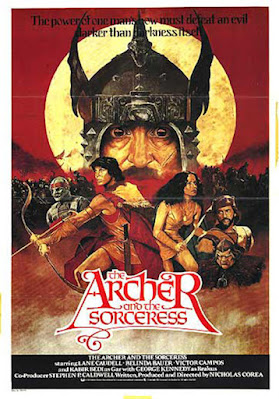 Working on something here that might become a regular feature. I love movies. One of my first semi-professional gigs was writing movie reviews. So really this is just me getting back to my roots. My reviews, such as they are, will be like my October Horror Movie reviews, though I am likely to provide a little more detail since I doubt that any of these movies need to be protected by spoilers. Also, I want to talk about any potential game material from the movies.
Working on something here that might become a regular feature. I love movies. One of my first semi-professional gigs was writing movie reviews. So really this is just me getting back to my roots. My reviews, such as they are, will be like my October Horror Movie reviews, though I am likely to provide a little more detail since I doubt that any of these movies need to be protected by spoilers. Also, I want to talk about any potential game material from the movies.











